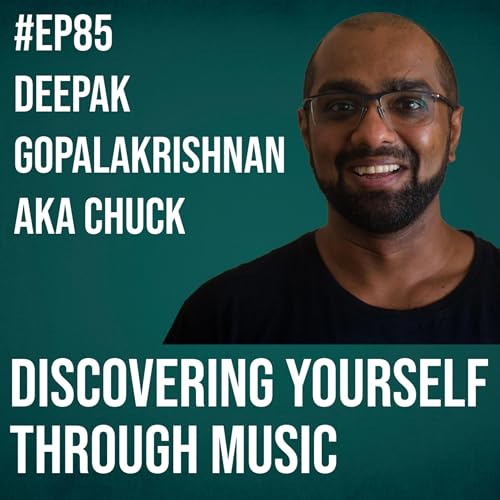On Episode 89 of the #LearningStories podcast we chat with Uday Khambadkone. He was born and raised in Mumbai. He discovered his passion for photography while pursuing an Engineering degree in the United States. An accidental encounter with a dark room course in Irving, Texas sparked a journey that has led to more than two decades in documenting cultures and social causes around the world. You can find him on Substack and Linkedin.
Show Chapters
(00:05) - Podcast Introduction
(00:30) - Guest Background
(02:25) - Stories from your childhood
(02:35) - "I had a younger brother"
(02:45) - "Both my parents used to go to work"
(03:10) - "We spent a lot of time in my grandmother's place"
(03:45) - What was your relationship with your brother?
(04:20) - The cabinet incident at home
(05:00) - What do you remember of your school days?
(05:40) - "I was not a very studious student"
(05:50) - "I did not enjoy history and geography"
(06:00) - "I liked math and science"
(06:17) - "I also enjoyed baking"
(07:00) - What kind of books do you like reading now?
(08:00) - My 8th grade math teacher
(08:40) - Breaking down radios at home with my brother
(10:00) - What were your memories of studying engineering as a student?
(10:20) - "I always like to try different things to solve problems"
(11:00) - The experience of writing and submitting an academic paper
(12:45) - Experience as a graduate student in the US
(14:00) - The transition from digital signal processing to telecommunication
(15:20) - What were your early years as an engineer in the US like for you?
(16:30) - The positive and negative aspects of moving to a new country
(17:30) - "I went with a very open mind"
(18:00) - "I did not experience too much discrimination"
(21:40) - The many narratives and stories of a place
(22:55) - What was your experience learning photography at a community college?
(23:45) - "I took photography classes in that community college for 6+ years"
(24:50) - "In the US, lots of working professionals do courses at community colleges"
(25:30) - Who were your first photography teachers?
(27:20) - How did you work with your community college to create photography courses?
(28:00) - The difference between learning to be an engineer and a photographer
(29:00) - "I never looked at photography as a professional endeavor"
(30:00) - Why photography was not a viable career option?
(31:00) - "I was using my job to fund my love for photography"
(32:00) - How did social media change photography?
(32:40) - "Instagram is quite limiting as a platform"
(33:10) - Why do photographers need to study the work of other photographers?
(34:10) - Advice for newer generation of photographers
(37:35) - How to find your voice as a photographer?
(37:55) - Stories behind the Photography Project in Ecuador
(42:10) - Stories behind the Photography Project in Mexico
(43:10) - Stories behind the Photography Project in Bosnia
(45:00) - How your lived experience influences your photography?
(46:30) - How we remember the stories of our life?
(47:10) - How we present our lives on social media?
(48:00) - Researching the people in my photos
(50:20) - Stories behind capturing photos of a mother
(53:35) - The value of family photographs
(1:00:15) - Why print photographs and the dangers of digital photos?
(1:01:20) - How loved ones capture your photos?
(1:04:20) - The photographers legacy collective
(1:07:00) - Learning from street photographers you admire
(1:11:00) - Closing Notes
Show Links
Uday's Website - https://udaykhambadkone.com/
'Chalo Chalo Click' Substack Newsletter - https://chaloclickclick.substack.com/about
Uday on Linkedin - https://www.linkedin.com/in/udaykhambadkone/
Show Description
#LearningStories is an audio and video show where we interview a diverse set of learners from the 21st century. Each guest profiled here has a unique story to share about how they acquired a set of valuable skills and knowledge in a creative and innovative manner.
 1 hr and 7 mins
1 hr and 7 mins 1 hr and 13 mins
1 hr and 13 mins 1 hr and 13 mins
1 hr and 13 mins 1 hr and 50 mins
1 hr and 50 mins 1 hr and 22 mins
1 hr and 22 mins 1 hr and 27 mins
1 hr and 27 mins 1 hr and 23 mins
1 hr and 23 mins 1 hr and 14 mins
1 hr and 14 mins

